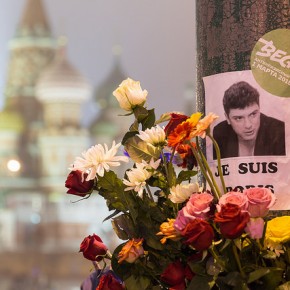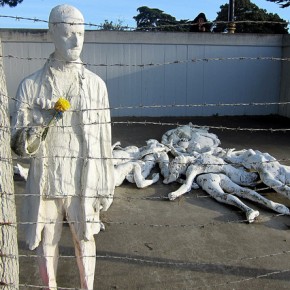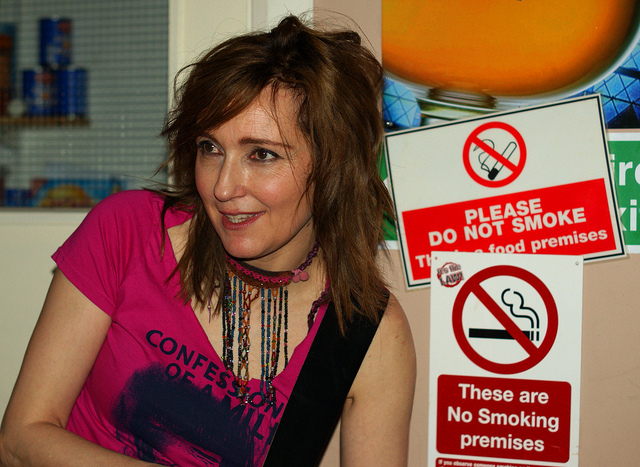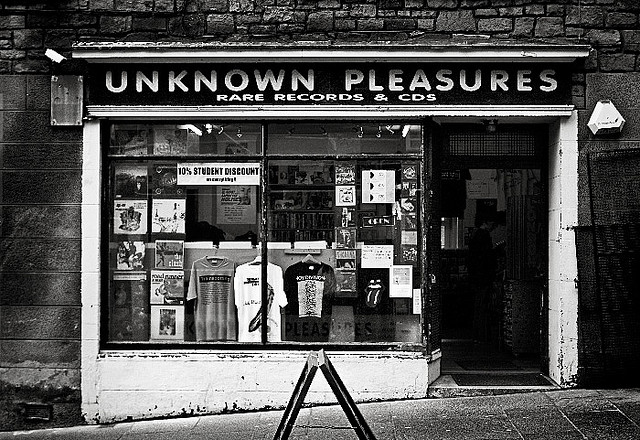Few bands have a more problematic relation to novelty than Gang of Four. Persistently critical of postmodern capitalism’s relentless search for new sources of income, they still repudiated the nostalgia that has so often beset the modern Left, embracing electronic dance music when most of their fellow travelers looked down on anything that deviated from classic rock instrumentation. But that move looks a lot different now than it did in the early 1980s.By the time Gang of Four reunited for the second time in 2004 to tour with their original line-up, they were being namedropped by half of the Pitchfork generation.
Bands like The Rapture, Bloc Party and LCD Soundsystem made no secret of their eagerness to build on the Leeds quartet’s experiments in musical cross-pollination, suggesting that the very idea of a war between the synthesizer and the guitar was a legacy of the Dark Ages when liking Depeche Mode was enough to get you ostracized by two thirds of your peers. The best music of a decade ago sounded fresh because it followed a fallow period when the Backstreet Boys and Mariah Carey topped the charts. Yet regarding it as cutting edge required impressive feats of historical amnesia. Unless, that is, you were to advance the argument that the very idea of linear cultural progress was itself outdated.
As the most obvious antecedent for this burst of musical creativity, Gang of Four thus served either as a confirmation that the new was actually decades old or an example, reinforced by their own return to the stage, of the pointlessness of worrying about whether what is “next” lies in the past or the future.
Perhaps the title of Gang of Four’s latest album What Happens Next is an allusion to this problem. More likely, though, it is intended as an oblique political commentary on the dire state of the world in 2015. No matter what plot lines we project forward, the potential for dystopia seems high. And there’s also an air of inevitability to our decline and fall, a sense that what we do — or do not do — is no longer pertinent: the future is going to happen regardless. In the face of this resignation, releasing new music may seem like a futile gesture. Would the alternative, to foreswear the impulse to create, be any better? Our world certainly suffers from an excess of both products and people. Any addition to that burden is bound to strain the planet’s finite resources a little further. It makes perfect sense to ask whether there’s any justification for doing more, no matter how innocently an action is conceived.
The way Gang of Four began their career guaranteed that this question would never be far from anyone’s lips. Because, above all else, they refused to participate in the delusions that have underpinned popular music since the invention of the phonograph. “Your kiss so sweet/your sweat so sour/Sometimes I’m thinking that I love you/but I know it’s only lust”, the crucial lines from their remarkable 1978 indie debut single “Damaged Goods” make it clear how little patience they had for sentimentality. And the album version of its even more stunning B-side “Anthrax” confirms this with a spoken-word commentary in its right channel that dissects other groups’ penchant for writing about love “because they think that there’s something so special about it.”
With lyrics like these, Gang of Four strongly implied that the only reason human beings continue to have hope for the future is because they are subject to a biological imperative to reproduce, one they either act on literally or sublimate into the creation of inanimate substitutes for children. Progress isn’t qualitative — things don’t get better — but the mere accumulation, as Walter Benjamin brilliantly argued in his conception of the angel of history, of more refuse that reflects our failure as a species to hold our passions in check.
It might seem easy, then, to mock the band’s need — or at least founding member Andy Gill’s need, since the rest of the original line-up is no longer a participant — to keep on keeping on. But the new album is strong enough to make such a critique seem uncharitable. Though not as immediately impressive as its 2011 predecessor Content, for which Jon King was still on board, What Happens Next does not feel like the work of artists who have nothing left to say, even if what they are saying is something that has been said before.
Abandoning the guitar-forward sound of Content, which conjured comparisons to Gang of Four’s earliest work, What Happens Next is wider ranging. To be sure, it is still saturated with the post-punk aesthetics for which the band will always be considered a standard-bearer. Yet there is a sense of greater openness to what came after that moment in musical history, including the atmospherics of mainstream 80s rock. “The Dying Rays”, which features German New Wave icon Herbert Gronemeyer, practically revels in the often-reviled tics associated with use of the Yamaha DX7.
Other tracks also partake of sounds that were once the embodiment of kitsch, the very thing that alternative groups like Nirvana made their name repudiating. Yet the overall effect is by no means embarrassing. At times, listening to What Happens Next channels the experience of reading The Face magazine back in its before-the-falling-of-the-Wall heyday, when the long-term promise of new technology seemed worth enduring its short-term overindulgence. In a way, this new album sounds like the one Gang of Four might have made if they hadn’t gone on hiatus in 1986.
It’s a strange period to revisit. After all, that was a time when it was possible to sense the Cold War’s conclusion on the wind, whereas we now seem to have returned to its frustrations with a vengeance. From the seemingly permanent War on Terrorism to Russia’s reemergence as a threat to the West, the hopes that started cresting in 1989 are being systematically dashed. But maybe that’s why What Happens Next demonstrates such an ambiguous relation to futurity.
When the song “Graven Image” first invokes the “dark ages”, it seems like another restatement of the record’s pessimistic take on life in the contemporary security state. But the longer you listen, the more you notice the word that comes afterwards: “Dark ages dawn/And as the light falls/The dark ages dawn.” It’s hard to deny that the future looks grim. Yet we are programmed to remember that the night always seems darkest right before the first glow spreads in the East.
Photograph courtesy of Gang of Four





